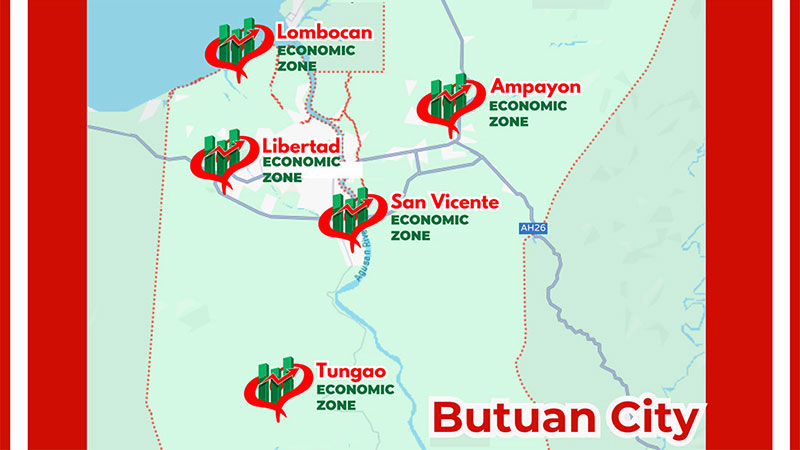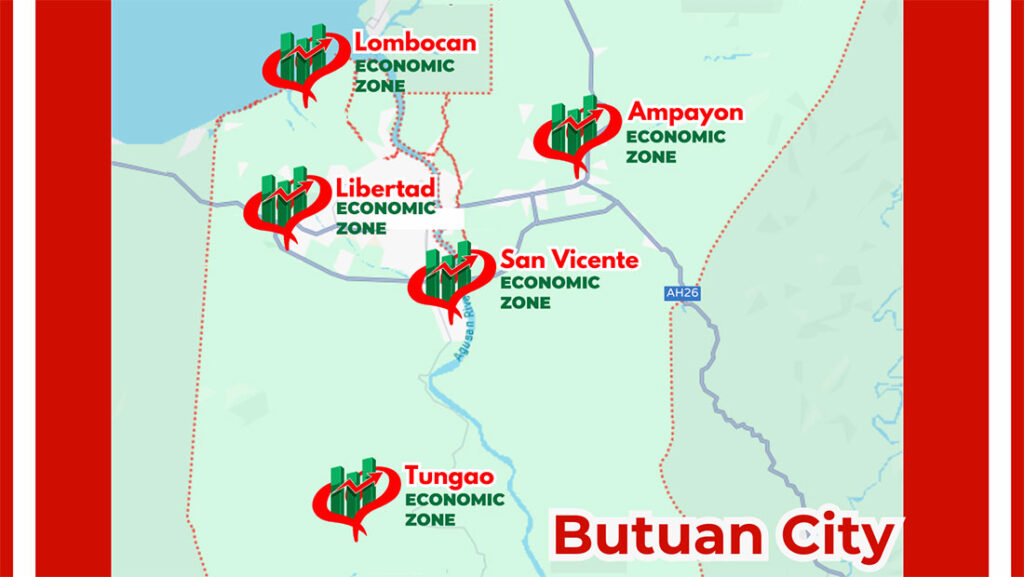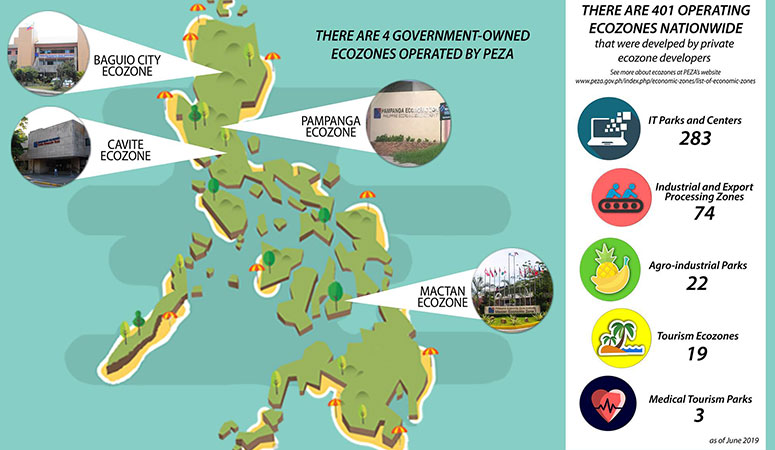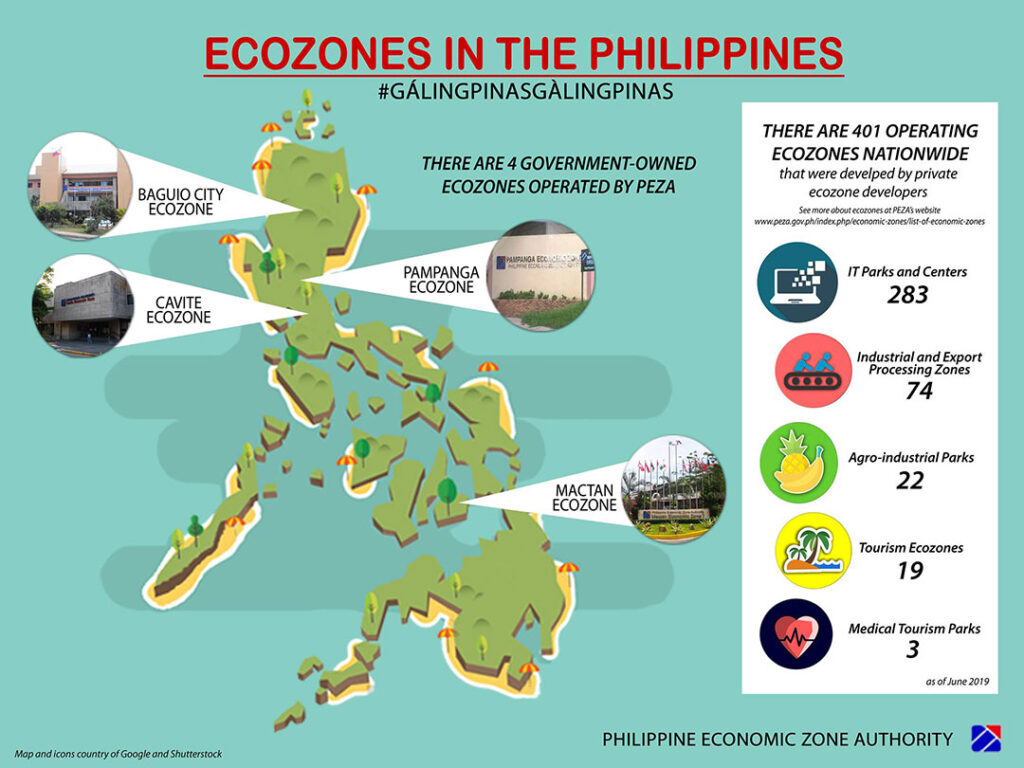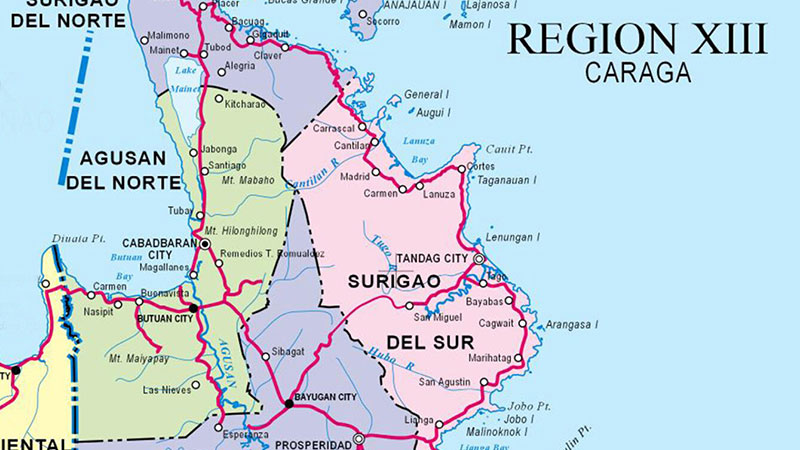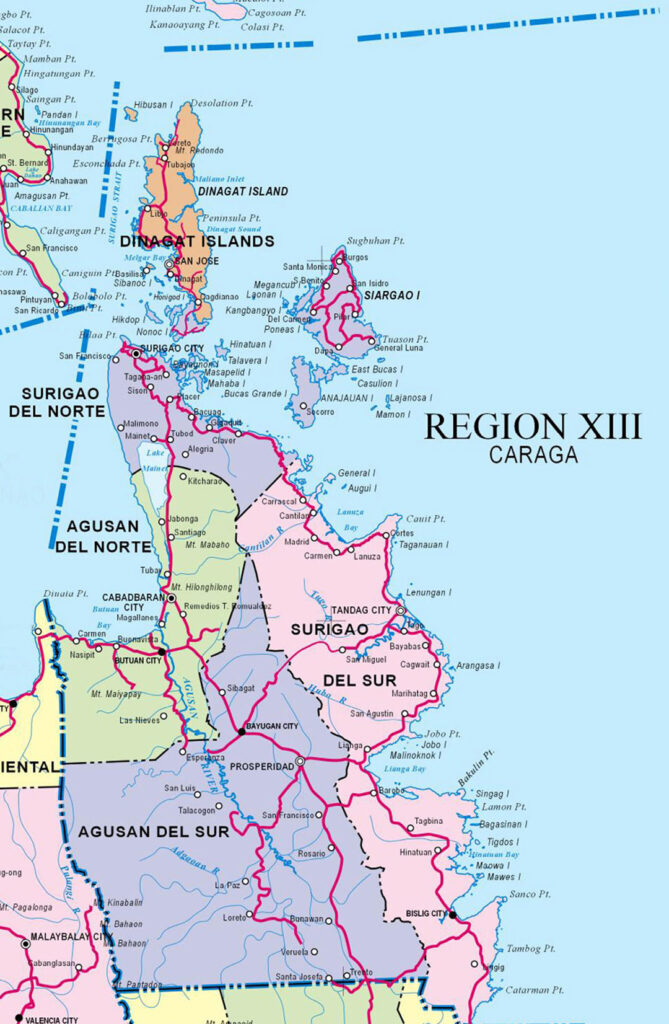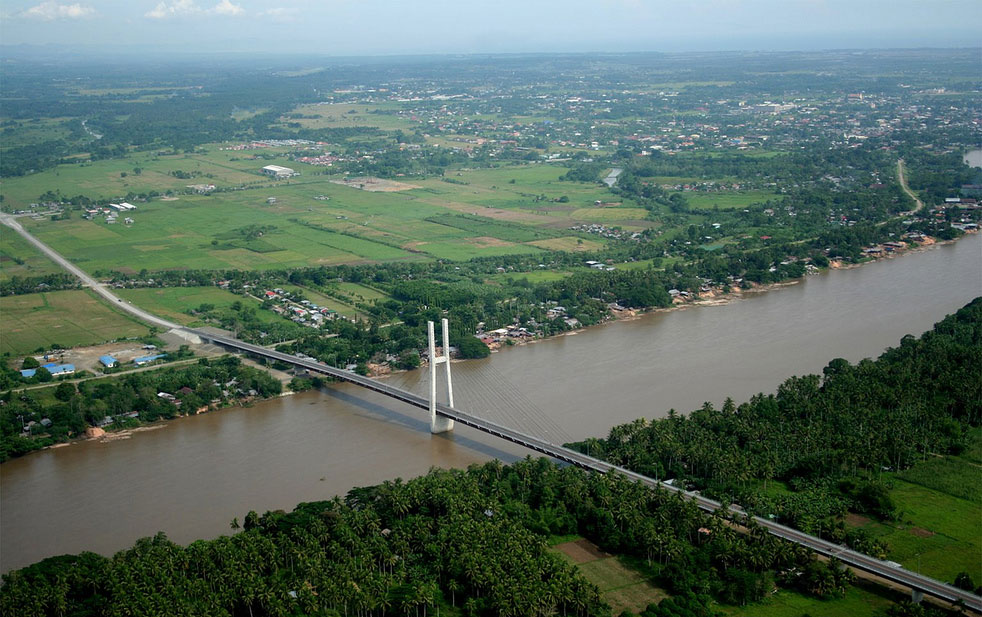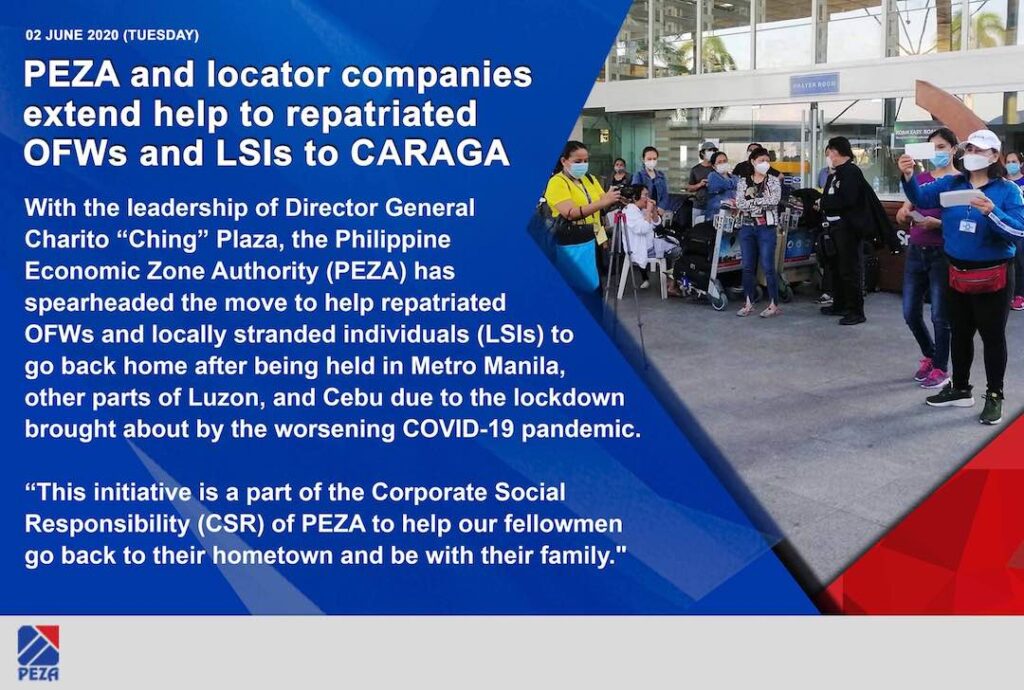
On June 11, 2020, in the midst of the pandemic, hundreds of locally stranded individuals (LSI) were finally able to make it back home after being stranded in Manila since March after lockdown protocols were enacted due to the COVID-19 pandemic.
Despite the dilemma of choosing between making sure that the unfortunate individuals who were stuck in Manila could finally go home, and weighing the risks for the safety of the residents of Butuan City and its neighboring provinces, then PEZA Director General Charito B. Plaza made a difficult but stern decision to send home 293 LSIs onboard two sweeper flights from Manila.
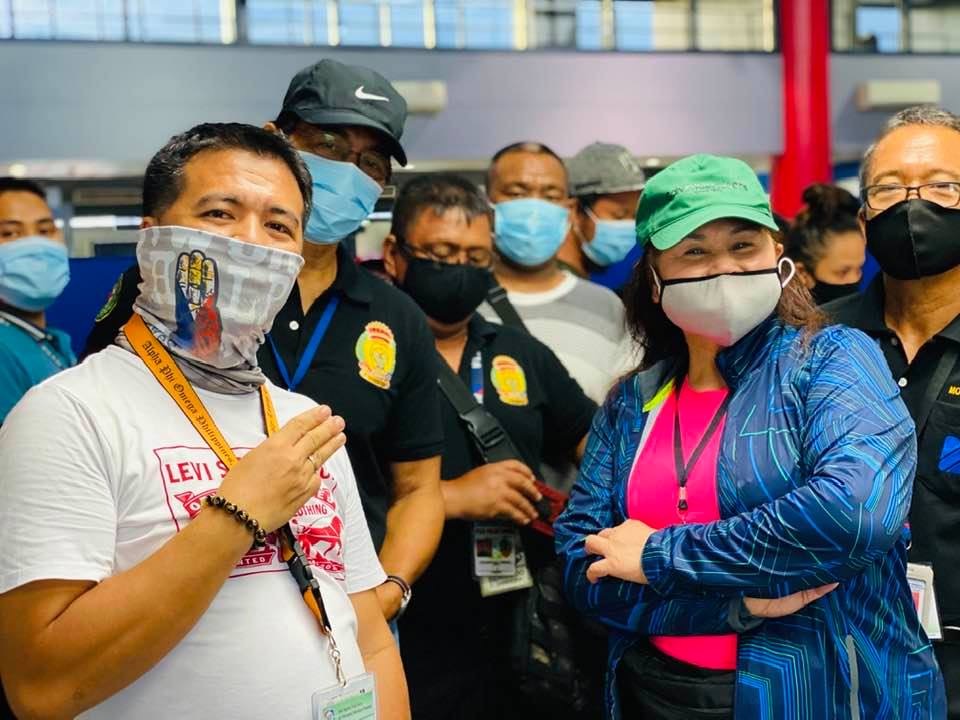
In an open letter posted on June 13, 2020 on the Radyo Pilipinas Butuan Facebook Page, Charito B. Plaza addressed the concerns on the difficult decision. She iterated that the sweeper flights were an initiative of concerned Caraganons, one that was supported by the IATF, LGUs, and Regional and National agencies.
According to her, before the decision to send the LSIs home, the Regional Task Force passed a resolution—which the LGU respected—not to allow the OFWs and LSIs to go home to prevent the spread of the COVID-19 virus.
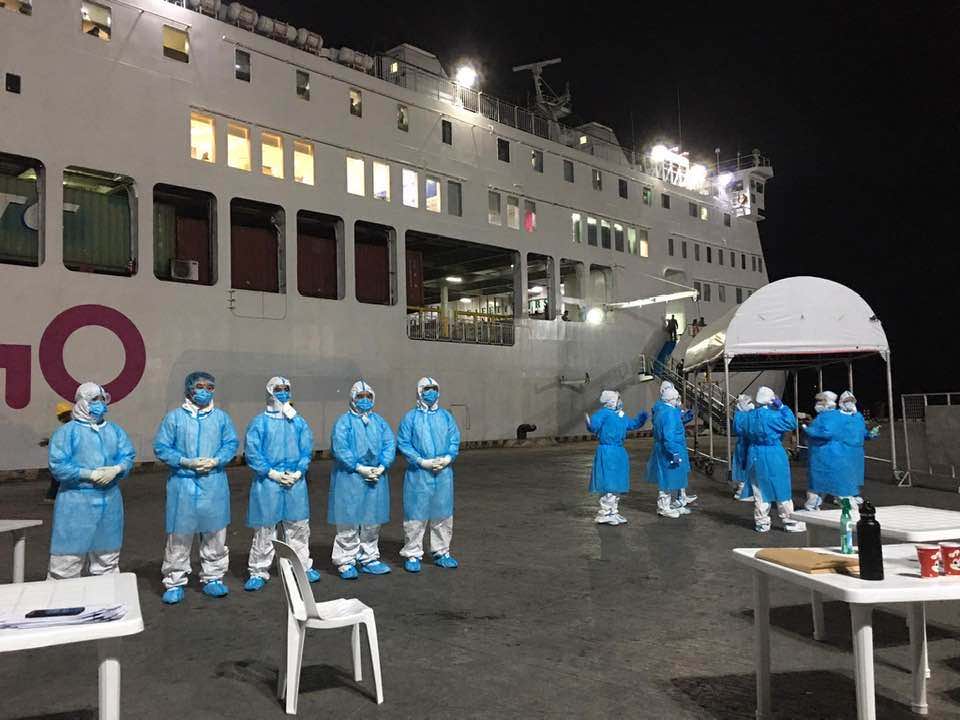
However, in her open letter, she addresses that due to the changes in the situation of the stranded individuals in Luzon, and the unfortunate plight that they had faced in the previous months, they decided to push for the LSIs to be given a chance to go home.
Plaza clarified that the LSIs would be subject to the same protocols, ensuring that they were properly tested by the Department of Health and the Local Government Units before being cleared to head to their respective homes.
This decision, while controversial at the time, proved to be a saving grace for hundreds of OFWs and LSIs, most of whom were already on their last straws. The decisions to send home the stranded individuals did not significantly affect the number of COVID-19 positives in Caraga region, but it did affect the lives of those individuals who were stranded in Manila and other parts of Luzon, as well as their families who were fervently waiting in their hometowns.
